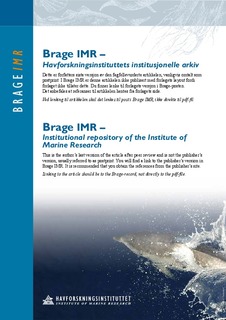| dc.description.abstract | Changes in size and age at maturation of many exploited fish stocks have been investigated and the influences of environmental factors and exploitation have often been inferred, but not explicitly investigated. Here we determine probabilistic maturation reaction norms (PMRNs) for Barents Sea haddock (Melanogrammus aeglefinus) using generalized linear models (GLMs) and mixed effect models (GLMMs), which account for the correlation among samples within a tow station, and investigate the effects of fishing mortality, environmental factors (NAO, water temperature, and salinity), and potential density dependence or species interaction effects. We found little evidence of a consistent trend in maturation tendencies for Barents Sea haddock for cohorts 1983–2003, ages 4–6 years. Female haddock matured at larger lengths for a given age than males, but overall patterns were similar for both sexes. The GLMM approach gave consistently higher PMRN midpoint estimates than the GLM approach, which indicated that PMRNs that do not account for correlations within the data may bias estimates. Environmental factors, rather than exploitation, density dependence, or species interactions, were responsible for the observed changes in size and age at maturation in Barents Sea haddock during the late 1980s through early 2000s. Little evidence of fisheries-induced evolution was found in these fish over the time period investigated. The lack of a significant temporal trend in maturation may be due to several challenges in estimating representative population parameters for this stock, the trait change being in a period of stasis or reversal, or adaptation by the fish to higher exploitation in the past resulting in negligible evolutionary selection during the study period when exploitation has been more moderate. | no_NO |
